John Elder Robison's Blog, page 11
September 24, 2012
Some poetry from Scott Lentine
I'm pleased to showcase some poetry from Scott Lentine, a 25 year old man with high-functioning autism (PDD-NOS/Asperger's) from Billerica, Massachusetts.
Scott works as a public policy intern at the Arc of Massachusetts in Waltham, where he tries to persuade people to support key legislation that will help improve of individuals with developmental disabilities by giving them improved employment, health care, and social services well into adulthood.
I'm sure Scott will welcome your comments and thoughts . . .
Just a
Normal Day
Never knowing what to say
Never knowing what to do
Always looking for clues
Just a normal day
Feeling unsure
Totally perplexed with everyday life
Always on edge never certain
I wish I could lift this curtain
Needing to constantly satisfy my need for information
Always online searching for new revelations
Going from site to site
Obtaining new insights every night
Trying to connect with people my age
Attempting to reveal my unique vision
But ending up alone and unengaged
Feeling like my needs a total revision
Just a normal day
Can’t You See
Can’t you see
I just want to have a friend
Can’t you see
I need the same connections in the end
Can’t you see
I want a good job
Can’t you see
I need to have stability and dependence and part of the
general mob
Can’t you see
I want to be independent on my own
Can’t you see
I want to be able to have my own home
Can’t you see
I want the same things as everyone else
Can’t you see
I want to be appreciated for myself
The Ode to the Autistic
Man
Try to understand the challenges that I face
I would like to be accepted as a human in all places
Where I will end up in life I don’t know
But I hope to be successful wherever I go
I would like to expand my social skills in life
Making new friends would be very nice
Stand proud for the autistic man
For he will find a new fan
I hope to overcome the odds I face today
Increased acceptance will lead me to a brighter day
By the age of 20, I will have made tremendous strides
I know in the future, life will continue to be an
interesting ride
I have made new friends by the year
I will be given tremendous respect by my family and peers
I hope to get noted for bringing the issue of autism to the
common man
So that autistic people can be accepted in this great land
Stand proud for the autistic man
For he will find a new fan
I hope to overcome the odds I face today
Increased acceptance will lead me to a brighter day
(c) 2007-2011 John Elder Robison

Scott works as a public policy intern at the Arc of Massachusetts in Waltham, where he tries to persuade people to support key legislation that will help improve of individuals with developmental disabilities by giving them improved employment, health care, and social services well into adulthood.
I'm sure Scott will welcome your comments and thoughts . . .
Just a
Normal Day
Never knowing what to say
Never knowing what to do
Always looking for clues
Just a normal day
Feeling unsure
Totally perplexed with everyday life
Always on edge never certain
I wish I could lift this curtain
Needing to constantly satisfy my need for information
Always online searching for new revelations
Going from site to site
Obtaining new insights every night
Trying to connect with people my age
Attempting to reveal my unique vision
But ending up alone and unengaged
Feeling like my needs a total revision
Just a normal day
Can’t You See
Can’t you see
I just want to have a friend
Can’t you see
I need the same connections in the end
Can’t you see
I want a good job
Can’t you see
I need to have stability and dependence and part of the
general mob
Can’t you see
I want to be independent on my own
Can’t you see
I want to be able to have my own home
Can’t you see
I want the same things as everyone else
Can’t you see
I want to be appreciated for myself
The Ode to the Autistic
Man
Try to understand the challenges that I face
I would like to be accepted as a human in all places
Where I will end up in life I don’t know
But I hope to be successful wherever I go
I would like to expand my social skills in life
Making new friends would be very nice
Stand proud for the autistic man
For he will find a new fan
I hope to overcome the odds I face today
Increased acceptance will lead me to a brighter day
By the age of 20, I will have made tremendous strides
I know in the future, life will continue to be an
interesting ride
I have made new friends by the year
I will be given tremendous respect by my family and peers
I hope to get noted for bringing the issue of autism to the
common man
So that autistic people can be accepted in this great land
Stand proud for the autistic man
For he will find a new fan
I hope to overcome the odds I face today
Increased acceptance will lead me to a brighter day
(c) 2007-2011 John Elder Robison

Published on September 24, 2012 06:21
August 29, 2012
Join me next week for the Autism Law Summit - Washington DC
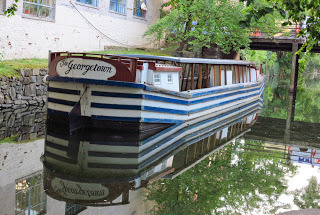
Please join us for the 7th Annual Autism Law Summit at
George Washington University in Washington D.C. from September 7-9, 2012. I will be speaking at breakfast on Saturday,
September 8.
The Autism Law Summit brings together parent advocates,
service providers, legislators and lawyers from across the country to discuss
the most recent information on securing, implementing and enforcing insurance
coverage for autism. Topics will include 1) updates on state autism insurance reform;
2) how to advocate for your self-funded health plan to adopt and autism
benefit; 3) the impact of Federal Health Care Reform (PPACA) on the autism
community; 4) recent litigation to secure coverage for ABA; and much, much
more!
Registration is required; the event page is here
http://www.pingg.com/rsvp/kq4adq5yjzfjimxt3
Here is a direct link to the agenda as it stands now
https://dl.dropbox.com/u/3249707/Summit%207/Summit%20agenda%2020120827.pdf
(c) 2007-2011 John Elder Robison

Published on August 29, 2012 06:28
August 19, 2012
RAISING CUBBY - A father-son story of Asperger's tractors, trains, and high explosives
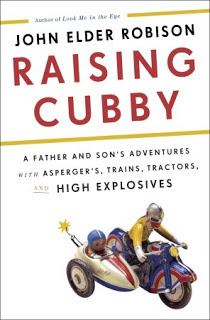
Over the past ten years, at least a hundred memoirs have appeared, each telling the story of a mom raising a child with autism. In those tales, the moms are heroic, and the kids are troubled. Some books are triumphant, while others end with defeat. In every case, the kids and their moms are front and center. But where are the dads?
I decided to address that question by telling my own story of parenting.
In my story, the dad's role in child rearing is fully revealed, and many secrets of fatherhood will be shared, some for the first time ever in print. Some secrets are shocking, while others are enlightening. A few are even amusing, though I view all of them with the greatest of gravity. Among the secrets I reveal:
How to mark your newborn child, and be protected from "swapped at birth?" exposes forevermore;
What to do with a kid who won't go to sleep;
How to tell the difference between nuclear powered robotic farm animals, and natural born creatures;
Imaginative and creative uses for grandparents;
The true story of Christmas, including the secret location where coal for children's stockings is stored;
The best ways to deal with monsters;
How to build Vegetable Artillery;
How to buy your own railroad;
What to say when Federal Agents come calling.
Armed with this story, any prospective dad will be able to enter into parenthood fully armed and prepared for whatever may come. Dads who already have children will get new ideas for fun and exciting entertainment. Moms will gain remarkable new insight.
Family pets will feel more secure.
You can preorder your copy from Amazon here
You can preorder from an independent bookseller here
(c) 2007-2011 John Elder Robison

Published on August 19, 2012 08:54
July 24, 2012
A Few Musicians I've Photographed
I started working in music at age 16, when I dropped out of high school and joined a band.
I spent the 1970s building sound equipment, special effects, and custom instruments for musicians. In the 80s I left the music business to focus on more commercial engineering work. In the 1990s my brother worked in advertising, and one of his accounts was Nikon. He got a few cameras out of them, and sent one to me.
That started me on a new interest - photography. It took me a few years to acquire the skills of the photographer's trade. By 2000, I had developed my own style, which you can see below.
My brother quit advertising when his book Running With Scissors came out. I was working on cars then, looking for something creative to do . . .
One of the first places I turned when I went looking for subjects to photograph was the world of music. Here are a few samples of that work.
I've remained interested in photography to this day. I photograph performers of all sorts, in all sorts of places.
You can see more of my images on my public Facebook page
You can also subscribe to updates at my regular Facebook page
Rick Springfield, with a background of fog
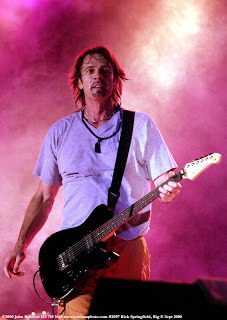
Picking up flowers after the concert. It's amazing, how many people threw flowers on the stage during the concert

Guitar with the late great George Jones
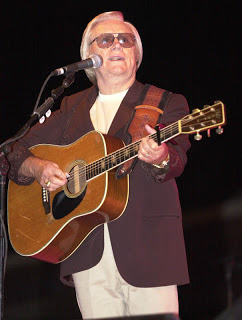
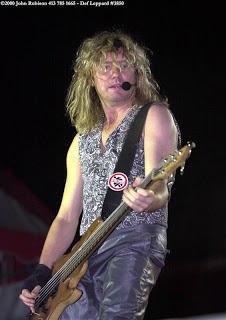



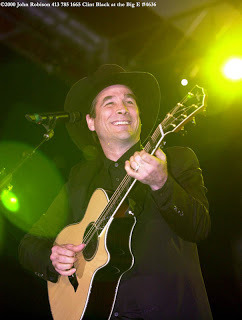
John Sebastian of the Lovin Spoonful plays Do You Believe In Magic?

Cowboy of the Village People turns fifty

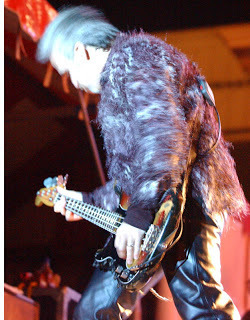
Frankie and the Teenagers are still on the road, fifty some years after Why Do Fools Fall In Love?
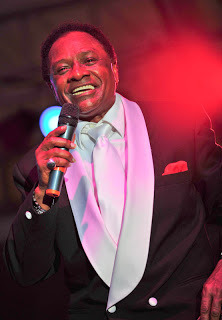
The view from the monitor console
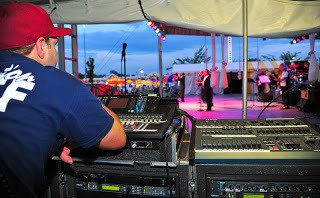
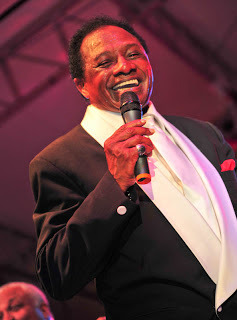
The Symphony's First Bassist looks out at the audience

Nashville
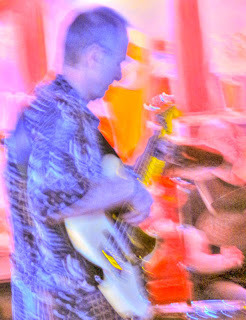
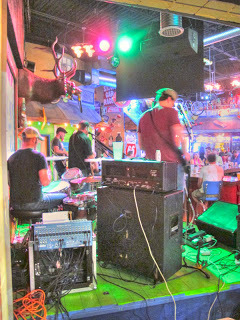
Boulder, Rocky Mountain High
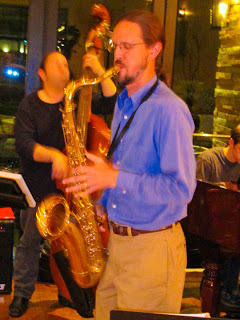
Del McCoury and his bluegrass pickers. I took these photos with a Canon G9 pocket camera, just to see if it could be done
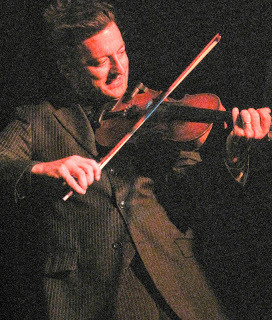
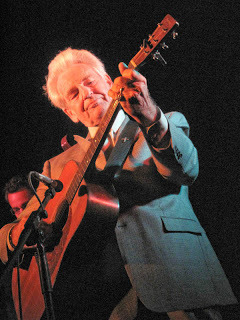
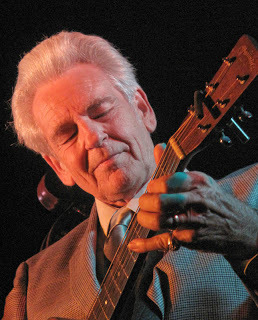
Journey
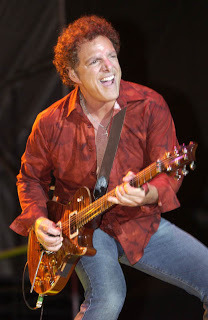
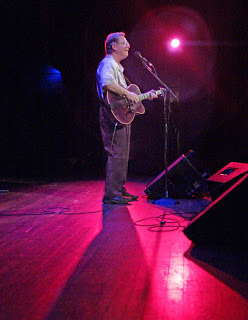


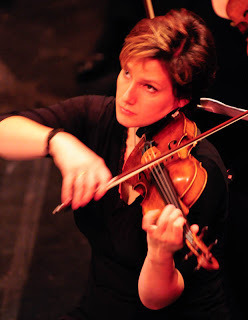
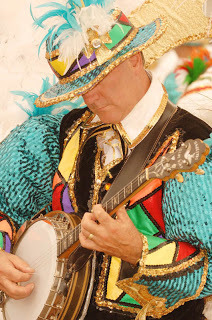
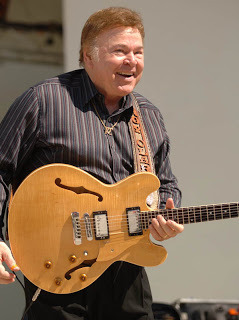
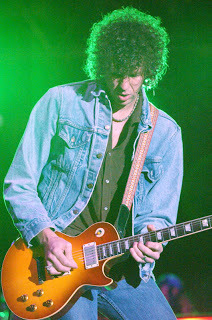
This is Barry Gaudreau of Boston, up close

Jimmy Hopper in fog


(c) 2007-2011 John Elder Robison

I spent the 1970s building sound equipment, special effects, and custom instruments for musicians. In the 80s I left the music business to focus on more commercial engineering work. In the 1990s my brother worked in advertising, and one of his accounts was Nikon. He got a few cameras out of them, and sent one to me.
That started me on a new interest - photography. It took me a few years to acquire the skills of the photographer's trade. By 2000, I had developed my own style, which you can see below.
My brother quit advertising when his book Running With Scissors came out. I was working on cars then, looking for something creative to do . . .
One of the first places I turned when I went looking for subjects to photograph was the world of music. Here are a few samples of that work.
I've remained interested in photography to this day. I photograph performers of all sorts, in all sorts of places.
You can see more of my images on my public Facebook page
You can also subscribe to updates at my regular Facebook page
Rick Springfield, with a background of fog

Picking up flowers after the concert. It's amazing, how many people threw flowers on the stage during the concert

Guitar with the late great George Jones






John Sebastian of the Lovin Spoonful plays Do You Believe In Magic?

Cowboy of the Village People turns fifty


Frankie and the Teenagers are still on the road, fifty some years after Why Do Fools Fall In Love?

The view from the monitor console


The Symphony's First Bassist looks out at the audience

Nashville


Boulder, Rocky Mountain High

Del McCoury and his bluegrass pickers. I took these photos with a Canon G9 pocket camera, just to see if it could be done



Journey








This is Barry Gaudreau of Boston, up close

Jimmy Hopper in fog


(c) 2007-2011 John Elder Robison

Published on July 24, 2012 18:08
Thoughts from the latest autism treatment grant review
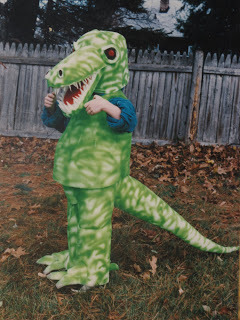
I’ve just come from this summer’s Autism Speaks treatment
grant review, and I’d like to share some thoughts about our most recent
work. I’m very pleased at the direction
we are headed. Changes were evident the
moment I entered the meeting room. We
had fresh faces representing new branches of science and engineering, and a
real sense that we need to take action and translate recent years work into
tangible benefit for the autistic population.
To understand what went on, I should begin with a little background
on the review is conducted. Most large
foundations and the Federal government use a similar process; here’s how it
works.
The funding organization first sends out a request for
proposals. In that, they spell out what
they are looking for. In this instance,
Autism Speaks was looking for innovative proposals that led to new ways of
treating or remediating some aspect of autistic disability.
Researchers from all over submitted applications. Over 100 came in. Of that number, roughly 70 were deemed suitable
for serious consideration. Those
proposals were handed out to reviewers who had expertise in those areas of
work. Our reviewers are drawn from
academia and medicine.; some serve as members of the permanent review board
while others join for one session only.
The proposals were each examined by three reviewers, who
assigned scores from 1 (wonderful) to 5 (poor).
Each science reviewer was assigned 6-10 applications; a fairly heavy
workload given the volunteer nature of this work.
The scores were ranked, and the administrators selected the
top thirty-some proposals for more detailed discussion based on those initial
scores. Those were the applications we
reviewed this week in San Francisco.
The applications were discussed in a somewhat randomized
order, one at a time. For each one, the
first assigned reviewer began by stating his score and describing the proposed
work. The second and third reviewers
added their comments and scores, after which the proposal was up for
discussion. Any of us could ask
questions, or express our opinions as to why the proposed work should or should
not be supported, or how the proposal might be modified or improved.
We can only fund a fraction of the applications received,
and we do our best to give constructive feedback when we turn a proposal
down. Maybe we think the goals are too
ambitious, or some part of the methodology is not well enough thought
through. Perhaps we think a collaborator
with different skills (software design, for instance) might be needed. Whatever out thoughts, they go back to the
applicants with the suggestion that they keep refining and reapply.
When the discussion ends (usually after 15 minutes or so) we
all vote on the proposal and our votes are averaged to get the final score. In that system, a passionate critic or
supporter (like me) has the ability to move everyone’s scores up or down based
on their comments. That means any one of
us can exercise greater power than one might expect given the size of the
board.
I was very happy to see how the makeup of the review group
has changed over the past few years.
Past boards were dominated by geneticists and medical people. This board had computer science experts, robotics
experts, and experts from speech pathology, psychology, and psychiatry. That’s great to see because those are the
disciplines that will deliver much of the practical help we need. Since autism affects us in many and varied
ways there was a lot of variety in the proposals we discussed this week.
There were only a few proposals involving medication,
something I found interesting. As more
than one scientist pointed out, we have yet to find a drug treatment for any of
the core symptoms of autism. We treat
the conditions that go with it – anxiety and depression for example – but the
core problems remain untouched. Yet
medicine still holds promise, especially in light of emerging knowledge in
genetics and biology.
Last year I wrote about some exciting work at Cold Spring
Labs, where scientists found a connection between a genetic error and sensory
sensitivity, and followed up that discovery with the identification of a
possible drug treatment. That work was
not part of this week’s discussion but it’s an example of how we will
eventually have drugs to remediate some aspects of autistic disability.
The idea of these potential drug therapies is simple to
describe, but extremely hard to implement.
Geneticists find a coding error that’s linked to autism. That error causes more or less of some
chemical to be made in our brains, which in turn changes the way they develop
in a maladaptive way. With that
knowledge, chemists develop drugs that (hopefully) address the chemical
imbalance and facilitate more normal brain development or function.
That work holds significant promise for the most crippling
aspects of autism. But what’s being done
for people at the other end of the spectrum; those who are not so obviously
disabled but who still face substantial challenges with executive function and
social skill? That question was a major
focus of this week’s meeting.
Quite a few proposals were directed at the development of
better organization, stronger social skills, and other problems that challenge
people like me every day. We’re looking
at how sleep dysfunction adds to disability, and what to do about eating
problems. We’re looking at practical
adult issues with new therapies to help us succeed in school and employment.
There has been a great outcry for this type of work from the
autism community and I’m delighted to see researchers are responding and the
funding agencies are coming through with support. It will be a few years before you begin
reading results in the journals but this is the first step.
I was also very happy to see that a large percentage of the
proposed work would benefit autistic adults, as opposed to children. Indeed, the percentage of proposals that
addressed teen and adult issues was the highest I’ve seen yet.
Many if not most of the therapies we discussed were directed
at the more verbal end of the autism spectrum. The challenge there is that
people often lack understanding of why they should say or do a particular
thing, and teaching a rote response (the behavioral method, exemplified by ABA)
comes across as mechanical and fake.
It’s far harder to teach this deeper understanding (which some NT people
have instinctively) but this newest work proposes to do just that, in several
areas.
The therapies we discussed were based entirely on
talking. Personally, I’d like to see the
power of talk therapy augmented by new medication or tools like TMS but we are
not quite at that stage in the research. I can’t wait till we are.
The whole idea of this kind of therapy is to help those of
us on the spectrum make our best possible lives. That goal is in line with the reality of life
for many if not most of us on the spectrum.
We don’t seek “cures” or fundamental change but we need tools to help us
succeed at the levels we know we can.
At the end of our meeting we talked about another pressing
issue: the need for a tool to evaluate changes in quality of life for people on
the spectrum. To my surprise, no good
measure exists today. If we want
insurance to cover the new therapies we are funding, we’ll need to show that
they really help. Development of QOL
measurement tools will be vital to this effort.
That brings us to the next step in this process: delivering
the fruits of research to the population who wants help. Right now, two things hold us back – lack of
insurance coverage and clinician training.
Recent research initiatives have already produced promising
therapies like PEERS and Unstuck but they are not available to many people because
health insurance plans won’t cover them.
A good QOL measure for new therapies would make a powerful argument for
insurance coverage. Ultimately, though,
resolution of that problem lies in the realm of insurance legislation and not
science. Until we solve that social
problem the best of what researchers develop will remain out of reach for most
families.
The other issue – clinician training – is one we must solve
with additional funding. When a new
therapy is developed the researchers need to train a staff that will in turn
train clinicians. That training work
must be supported by yet another grant, and those funds are very tight. Right now many promising interventions remain
relatively unknown for that reason.
Look for a press release in the next few months describing
the final choices for funding. When you
read about the newest research remember this is how it was shaped and
chosen.
(c) 2007-2011 John Elder Robison

Published on July 24, 2012 05:38
July 22, 2012
The KISS guitars, now and then, in words and pictures
Many of you have read about my time on the road with KISS and other bands. I've done a number of interviews, and of course there are the chapters in Look Me in the Eye and Be Different.
I realized there is no archive of photos to go with the stories and I've decided to set that straight.
Here they are, in no particular order. Perhaps I'll come back one day and rearrange them . . .
This is me, circa 1979:
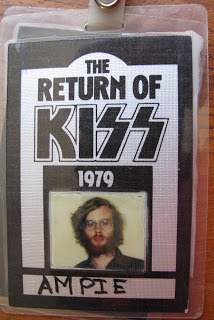
And here I am today:
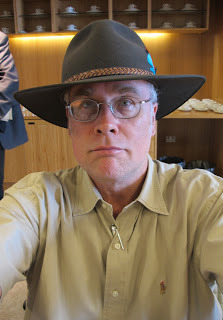
Kinda different, huh?
This is Ace Frehley, playing our original light guitar on stage with KISS

That guitar was a modified Gibson Les Paul TV. We routed out the face of it, and embedded a circuit board with almost 1,000 incandescent lights. We set it up to do stripes (you can sort of see that in the photo) and them flash the whole border at the end.
The lights were powered by a Ni-Cad battery pack and the music was transmitted via a Shaeffer Vega wireless rig so the whole thing was cable free. There was a special XLR-type plug in back to connect a battery charger between sets.
Ace played this guitar on a number of songs over the years but the one it's most famous for is New York Groove. He'd start the guitar while facing back in the corner of the stage. The audience could see something flashing but could not tell what. He'd walk out backward, turn round, and they would just go wild.
I describe that scene in the opening passage of my book BE DIFFERENT. I was in my early 20s when we made these guitars. I am a self-educated audio and electrical engineer. I met the guys from KISS in New York, while I was working as the American engineer for Pink Floyd's sound company, Brittania Row Audio.
We built all KISS's custom guitars in Massachusetts but I had to go on the road to fine tune their development. I was on the road for all the KISS tours of 78-82 and then the shows with Ace as Frehley's Comet after that. Here I am working on another of the light guitars, on the road in some hotel:
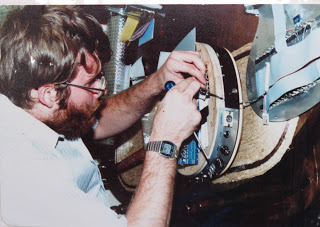
If you look close you'll see we added a layer of baltic birch plywood to the back of that guitar to thicken it. That was to allow even more lights (for big halls) and microprocessor control. Here I am in the Russell Hotel, New York, when that guitar was new.
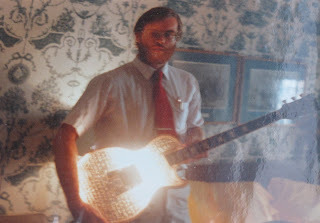
Here I am, in my back yard, with the same guitar a few years later when it came back for service
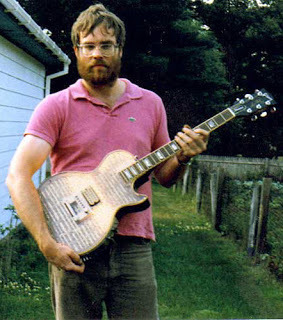
I designed all the special effects guitars KISS played in those years. I also created a fair bit of the electronics they played through. That included the light guitars below, the smoking guitars, the rocket guitars and the laser guitar for 1979, among many.
Long Island luthier Steve Carr did the fretwork and tuning to make our creations play. He also did the metallic body finishes and the custom inlays.
I designed the electronics. My then-girlfriend, later-wife, and current ex-wife Mary Robison did the assembly. My friend Jim Boughton did the mechanical engineering and fabrication.
Today Mary and I have a son, Jack. We're not married anymore (I'm remarried) but we remain close. Here they are at our house with one of their projects and Oigy, the Imperial War Pug.
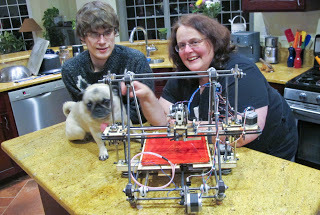
Here I am this spring, with master luthier Jim Cara, who has followed in the custom guitar tradition. Check out his story here.
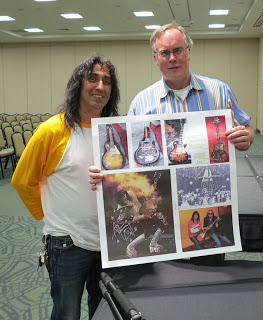
Finally, here's my son with the original light guitar this spring. Ace has sent is back to us for refurbishing.
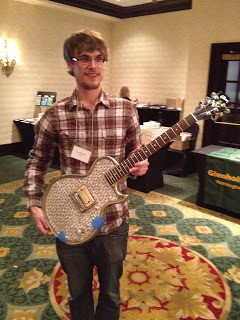
People still ask if we can make more of these instruments. Actually, we can. Check out my son's web site here, with a video of me and a brand-new light guitar using today's LED technology
Robison Industries
If you'd like to read more, start at page 112 of my book Look Me in the Eye
Then you can continue with the intro to Be Different
In a few more months, you'll be able to read about my son and the light guitars today in RAISING CUBBY.
I'll stop back soon with more pictures from my time in music.
Woof
(c) 2007-2011 John Elder Robison

I realized there is no archive of photos to go with the stories and I've decided to set that straight.
Here they are, in no particular order. Perhaps I'll come back one day and rearrange them . . .
This is me, circa 1979:

And here I am today:

Kinda different, huh?
This is Ace Frehley, playing our original light guitar on stage with KISS

That guitar was a modified Gibson Les Paul TV. We routed out the face of it, and embedded a circuit board with almost 1,000 incandescent lights. We set it up to do stripes (you can sort of see that in the photo) and them flash the whole border at the end.
The lights were powered by a Ni-Cad battery pack and the music was transmitted via a Shaeffer Vega wireless rig so the whole thing was cable free. There was a special XLR-type plug in back to connect a battery charger between sets.
Ace played this guitar on a number of songs over the years but the one it's most famous for is New York Groove. He'd start the guitar while facing back in the corner of the stage. The audience could see something flashing but could not tell what. He'd walk out backward, turn round, and they would just go wild.
I describe that scene in the opening passage of my book BE DIFFERENT. I was in my early 20s when we made these guitars. I am a self-educated audio and electrical engineer. I met the guys from KISS in New York, while I was working as the American engineer for Pink Floyd's sound company, Brittania Row Audio.
We built all KISS's custom guitars in Massachusetts but I had to go on the road to fine tune their development. I was on the road for all the KISS tours of 78-82 and then the shows with Ace as Frehley's Comet after that. Here I am working on another of the light guitars, on the road in some hotel:

If you look close you'll see we added a layer of baltic birch plywood to the back of that guitar to thicken it. That was to allow even more lights (for big halls) and microprocessor control. Here I am in the Russell Hotel, New York, when that guitar was new.

Here I am, in my back yard, with the same guitar a few years later when it came back for service

I designed all the special effects guitars KISS played in those years. I also created a fair bit of the electronics they played through. That included the light guitars below, the smoking guitars, the rocket guitars and the laser guitar for 1979, among many.
Long Island luthier Steve Carr did the fretwork and tuning to make our creations play. He also did the metallic body finishes and the custom inlays.
I designed the electronics. My then-girlfriend, later-wife, and current ex-wife Mary Robison did the assembly. My friend Jim Boughton did the mechanical engineering and fabrication.
Today Mary and I have a son, Jack. We're not married anymore (I'm remarried) but we remain close. Here they are at our house with one of their projects and Oigy, the Imperial War Pug.

Here I am this spring, with master luthier Jim Cara, who has followed in the custom guitar tradition. Check out his story here.

Finally, here's my son with the original light guitar this spring. Ace has sent is back to us for refurbishing.

People still ask if we can make more of these instruments. Actually, we can. Check out my son's web site here, with a video of me and a brand-new light guitar using today's LED technology
Robison Industries
If you'd like to read more, start at page 112 of my book Look Me in the Eye
Then you can continue with the intro to Be Different
In a few more months, you'll be able to read about my son and the light guitars today in RAISING CUBBY.
I'll stop back soon with more pictures from my time in music.
Woof
(c) 2007-2011 John Elder Robison

Published on July 22, 2012 14:30
July 16, 2012
RAISING CUBBY is coming
It was one of those father-son afternoons we remember . . .
We stood at the fish pier, watching feral children haul misshapen sea creatures out of the water as they chattered furtively. A grizzled old man stood beside us. "I had a kid once, too," the old man said. "But it didn't last. Kid misbehaved and mouthed off so much I got fed up. Sold him to a Sumatran reptile trader, and never looked back."
"You better not sell me," Cubby said. And I didn't. The result:
RAISING CUBBY, my newest book. Coming January 15. Freaks and zombies included.
http://www.amazon.com/Raising-Cubby-Adventures-Aspergers-Explosives/dp/0307884848(c) 2007-2011 John Elder Robison

We stood at the fish pier, watching feral children haul misshapen sea creatures out of the water as they chattered furtively. A grizzled old man stood beside us. "I had a kid once, too," the old man said. "But it didn't last. Kid misbehaved and mouthed off so much I got fed up. Sold him to a Sumatran reptile trader, and never looked back."
"You better not sell me," Cubby said. And I didn't. The result:
RAISING CUBBY, my newest book. Coming January 15. Freaks and zombies included.
http://www.amazon.com/Raising-Cubby-Adventures-Aspergers-Explosives/dp/0307884848(c) 2007-2011 John Elder Robison

Published on July 16, 2012 07:54
July 11, 2012
Autism therapies and insurance - IACC discussions
One of the most shocking (to me, at least) presentations at
yesterday’s IACC detailed the status of insurance coverage for autism
behavioral therapies around the country.
Peter Bell of Autism Speaks presented a number of charts that showed a
mix of hopeful and disturbing news.
On the hopeful front, he showed a chart of states that have
passed legislation making autism therapy a medical treatment, as opposed to
mental health counseling, which gives better coverage through private insurance
plans.
Yet at the same time he highlighted the extreme differences
between individual insurers within some states.
Even now, one family on a street can have a kid receiving 40 hours a
week of therapy where a family two doors down has a kid who gets next to
nothing, do to different employer insurance policies.
That is a disparity we should continue working to eliminate. As he said, we’ve come a long way. Five years ago, almost everyone was in the
same boat, with no coverage. Now quite a
few people have some coverage, but “quite a few” and “some” are not words a
progressive society should be using when it comes to autism interventions that
are life changing.
Unfortunately, there was more. Peter went on to cite a few
states whose programs have denied behavioral therapies on the grounds that they
are “experimental” or “not proven to work.”
I thought we were past that kind of shabby behavior. I guess not.
I immediately opened a dialogue to discuss how that could happen.
When a new drug is developed, the Federal government (via
the FDA) reviews test results and approves it to treat certain conditions. We’ve all heard how vital FDA approval is to
the success of drugs. That’s because the
FDA stamp of approval means the drug will be accepted as a legitimate treatment
for the conditions it’s approved for anywhere in the US. An insurer cannot decline it as experimental
unless it’s prescribed for something outside the range of its FDA approval.
I was shocked to hear that there is no analogous mechanism
for approving behavioral therapies in this country. As NIMH Director Tom Insel explained, in the
absence of a government approval system insurers look to the professional
organizations themselves. What do they
find? There is a good national program
(BCBA certification) to train and certify ABA practitioners. The result – ABA is the most (indeed, the
only) broadly approved behavioral intervention for autism.
Why? Because it’s the
only one with uniform delivery standards nationwide. I know – many of you will tell me the quality
of ABA varies widely and I agree – but the BCBA training standard is indeed
uniform and it’s the all we have.
However, as someone who is working to get new therapies
developed and deployed, that state of affairs is totally unacceptable.
I’ve written about new therapies on this blog, and indeed
many show great promise. Their
effectiveness has been shown in many studies, yet they are not widely
available, and rarely covered by insurance.
Why? Because there is no way for
an insurer to know that the intervention being delivered in North Dakota is the
one designed and vetted at UCLA (for example).
University research centers develop these therapies and even
do training to propagate them in the field.
Important as those efforts are, they cannot roll out a new intervention
on a national scale to augment ABA. It’s
just not realistic for any single group to undertake that except over a period
of decades, which we do not have.
So what do we do about this?
I think we need Federal action that mandates insurance
coverage for a much wider array of behavioral intervention. Valuable as ABA is, is it not a path that
works for every kid, and frankly, it is “old news.” We need to get our insurers covering the
deployment of new therapies that will help a broader range of kids.
Dr. Insel and I talked about that after the meeting. He shared my concerns, and suggested this is a
problem we could address but it would require legislation that
would be resisted vigorously by the insurance industry. He told me there are groups working on this
very question is other fields, like depression.
His comment made me wonder if we need to band together to solve this as
one lobbying group.
The fact is, many behavioral interventions have been
developed and proven to work for depression, autism, and other conditions, but
they are seldom covered by insurance because they are not classified as medical
treatments and they lack any equivalent of FDA approval.
I want to thank Peter Bell, his group, and everyone else who
has worked so hard to get the insurance coverage we have today. And I want to thank him for opening our eyes
to the true nature of the next obstacle we must surmount – the development of a
mechanism by which new autism therapies can be delivered and covered by insurance. Without that, all the intervention in the
world will be worthless to most people, because they will have no way to pay
for it it.
And that is wrong.
Note:
John Elder Robison is a member of the IACC, but the opinions expressed here are strictly his own.
(c) 2007-2011 John Elder Robison

Published on July 11, 2012 05:43
July 10, 2012
The IACC is meeting today in Washington
I'm here in Washington for the first meeting of the reconstituted IACC - the interagency autism coordinating committee of the Secretary of Health and Human Services. Over the past two weeks I've put up several invitations on Facebook and Twitter, and it's looking like this will be a crowded event.
I've read through 100+ pages of comments people mailed in, and we'll hear more in person today.
It probably comes as no surprise to hear that many if not most comments are strong criticisms of our current policies regarding autism. The critiques that urge us to do more are the ones that trouble me the most. For the most part, I agree. We should be doing more. We should have better supports for autistic adults. We should have more aggressive early detection and intervention. We should educate society and make it more accommodating.
Unfortunately, we in the iacc cannot make those things happen. We can recommend more supports - and we do. But in the end, it is your (and my) elected officials who must vote the budgets and directives to make these things happen.
You might say iacc provides the plan, and they implement it. Much has happened already but even more remains to be done. I sure wish there was a way to make it happen faster.
Anyway I am off to the meeting now, and I hope to see a few of you in person today.
Be assured that I am keenly aware of the burden autistic disability places on those of us who live with it daily, at all levels. Development of tools treatments and therapies to remediate disability is a top priority for me. At the same time, I celebrate the remarkable gifts we bring to the world, and making that world a more accommodating and caption place for us is no less vital.
I hope we take a few more steps in that direction today.
Woof.(c) 2007-2011 John Elder Robison

I've read through 100+ pages of comments people mailed in, and we'll hear more in person today.
It probably comes as no surprise to hear that many if not most comments are strong criticisms of our current policies regarding autism. The critiques that urge us to do more are the ones that trouble me the most. For the most part, I agree. We should be doing more. We should have better supports for autistic adults. We should have more aggressive early detection and intervention. We should educate society and make it more accommodating.
Unfortunately, we in the iacc cannot make those things happen. We can recommend more supports - and we do. But in the end, it is your (and my) elected officials who must vote the budgets and directives to make these things happen.
You might say iacc provides the plan, and they implement it. Much has happened already but even more remains to be done. I sure wish there was a way to make it happen faster.
Anyway I am off to the meeting now, and I hope to see a few of you in person today.
Be assured that I am keenly aware of the burden autistic disability places on those of us who live with it daily, at all levels. Development of tools treatments and therapies to remediate disability is a top priority for me. At the same time, I celebrate the remarkable gifts we bring to the world, and making that world a more accommodating and caption place for us is no less vital.
I hope we take a few more steps in that direction today.
Woof.(c) 2007-2011 John Elder Robison

Published on July 10, 2012 04:37
June 4, 2012
UMass Autism Study Looking for Volunteers
From time to time I've posted calls for volunteers for research studies in the New England area. Here's one from my home town school: UMass:
A doctoral student in the Communication Sciences and Disorders
program at the University of Massachusetts - Amherst is completing her research in the
area of speech differences in children with autism spectrum disorders. Part of
her dissertation work is the development of a screening tool
that Speech and Language Pathologists can use to identify potential motor
difficulties that lead to language problems in children with autism. That
knowledge could have important implications for planning effective treatment.
She is seeking two groups of
volunteers: children with an autism spectrum diagnosis (this means autism,
Asperger’s, or PDD-NOS), plus neurotypical children for her control group.
Volunteers must be 4-11 years old,
with a vocabulary of at least 50 words. Children should have no cranio-facial
or other structural differences, such as cleft palate, or uncorrected visual or
hearing deficits (hearing aids and glasses are acceptable).
Participation in the study will involve
two visits to the Amherst campus. The first visit will include a hearing
screening, followed by a variety of speech tasks, like imitating sounds and
phrases, singing a song, telling a story, and talking about a favorite topic.
The second visit will include more
such tasks, followed by a brief review meeting with the clinician. Parents or guardians will also be provided
with a brief report outlining their child’s strengths and weaknesses on our
instrument.
This is an observation-only study
where the kids will be in a one-on-one setting with the clinician. There are no experimental therapies or
treatments, and nothing unpleasant.
Praise and rewards are provided, and participants will receive fifty
dollars for completing the study.
Appointments will be scheduled at
mutually agreeable times.
Please contact Dr. Mary
Andrianopoulos at (413) 545-0551, or her doctoral student at mboucher@comdis.umass.edu if you have questions, or if you’d like to enroll your child.
(c) 2007-2011 John Elder Robison

Published on June 04, 2012 17:35



